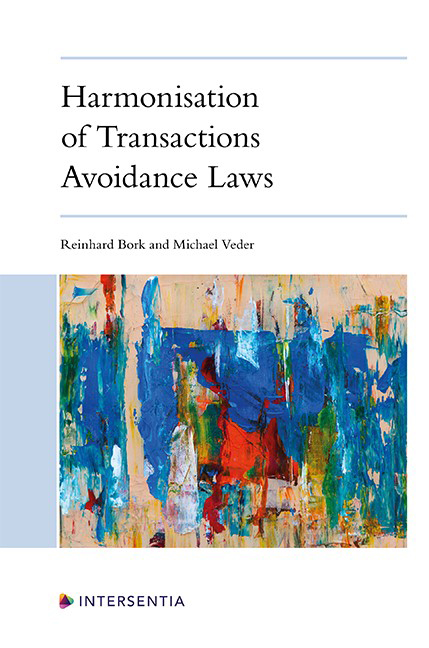Estonia
Published online by Cambridge University Press: 26 May 2022
Summary
A. INSOLVENCY LAW OF ESTONIA
Estonian transaction avoidance law is incorporated only in the Bankruptcy Act (Pankrotiseadus) and in the Code of Enforcement Procedure (Täitemenetluse seadustik). The Bankruptcy Act enacts rules for the collective liquidation procedure, with one exception – compromise – and the Code of Enforcement Procedure enacts rules for individual enforcement procedures. The Bankruptcy Act is applicable for companies and individuals, including consumers. Transaction avoidance is not possible in the case of reorganisation of companies under the Reorganisation Act (Saneerimisseadus) or natural persons under the Debt Restructuring and Debt Protection Act (Volgade ümberkujundamise ja võlakaitse seadus).
B. SCOPE
Generally, the Model Law about transaction avoidance is rather similar to the Estonian Bankruptcy Act. Anyway, in some cases Estonian Supreme Court resolutions make some differences between the Model Law and the implementation of transaction avoidance in Estonia. Therefore, in some cases the impact of the Model Law is more to on Estonian Supreme Court practice than on the valid Bankruptcy Act. However, we have to acknowledge that the Estonian Bankruptcy Act is also not fully harmonised with the Model Law. The following is an overview of the impact of the Model Law on the Estonian Bankruptcy Act and Estonian Supreme Court Practice. In conclusion, several differences are apparent, but overall the picture about the consequences is quite similar.
C. GENERAL PREREQUISITES
1) OVERVIEW OF THE VALID ESTONIAN BANKRUPTCY LAW According to the valid Estonian Bankruptcy Act §109, the general prerequisites for transactions avoidance are as follows:
1. transactions or other acts performed by the debtor;
2. concluded before the opening of the bankruptcy proceeding;
3. transactions or other acts performed by the debtor damage the interests of the creditors;
4. The avoidance grounds stipulated in §§110 – 114 shall be met:
4.1. General ground (§110);
4.2. Gratuitous transactions (§111);
4.3. Marital property transactions (§112);
4.4. Performance of financial obligations (§113);
4.5. Grant of security (§114).
Therefore, the transaction is avoidable if the general prerequisites and one of the avoidance grounds are met.
- Type
- Chapter
- Information
- Harmonisation of Transactions Avoidance Laws , pp. 345 - 366Publisher: IntersentiaPrint publication year: 2022



